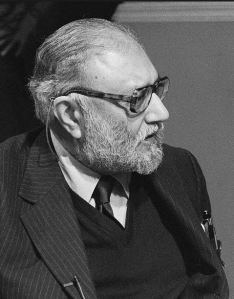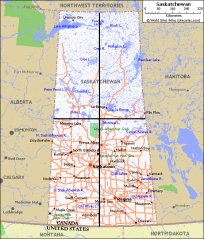
Abdus Salam 1926-1996
The Washington Post recently ran a story about the late Abdus Salam, a physicist who won the Nobel Prize almost 40 years ago. The piece concerns the politics of naming a building at a Pakistani university in honour of a man from a religious minority background. Salam’s family belonged to the Ahmadiyya community – followers of a Muslim faith deemed heretical by Pakistan’s dominant Sunni Muslims. The religion was formally declared ‘non-Islamic’ by the Pakistani government in 1974. Before the new decree, extremists sometimes attacked and burned Ahmadi businesses, mosques and schools; after the decree, members could be imprisoned for their beliefs. In protest and for safety, Dr Salam moved to London.
Salam from Pakistan
Before leaving Pakistan, Salam had been the chief science advisor to Pakistan’s president, had contributed to theoretical and particle physics, was the founding director of the Space Research Commission (SUPARCO), and had established the Theoretical Physics Group (TPG) in the Pakistan Atomic Energy Commission. He helped stage events that led to Pakistan’s nuclear weapons. He was undoubtedly loyal to his country.
 Abdus Salam is considered a major figure in 20th century theoretical physics. Salam had worked on the Grand Unified Theory, supersymmetry, the magnetic photon, vector meson, and neutrinos. His name is on the Pati-Salam model which uses four flavours of quarks to predict high-energy right-handed weak interaction with heavy W’ and Z’ bosons. The Pati-Salam Theory was proposed in 1974, is considered a mainstream theory, but faces competition from the Georgi-Glashow SU(5) unification theory. We still don’t know how this will play out or what it will mean for our survival as a species. Probably not much.
Abdus Salam is considered a major figure in 20th century theoretical physics. Salam had worked on the Grand Unified Theory, supersymmetry, the magnetic photon, vector meson, and neutrinos. His name is on the Pati-Salam model which uses four flavours of quarks to predict high-energy right-handed weak interaction with heavy W’ and Z’ bosons. The Pati-Salam Theory was proposed in 1974, is considered a mainstream theory, but faces competition from the Georgi-Glashow SU(5) unification theory. We still don’t know how this will play out or what it will mean for our survival as a species. Probably not much.
Salam was the first Pakistani and first Muslim to receive a Nobel Prize in science. He shared the 1979 Nobel with Sheldon Glashow and Steven Weinberg for contributions to the electroweak unification theory. Salam was connected, political, energetic, influential, and a brilliant scientist. But having a school building named for him now, 20 years after his death, has been a politically charged exercise.
As the Post reported,
“In most countries, it would hardly require an act of courage for the government to rename a university science center after a native-born Nobel Prize-winning physicist who died two decades earlier.”
It took courage for the committee to propose the name change that would recognize their fellow countryman’s achievements because “officials often feel the need to appease religious hard-liners at the expense of progress and international stature.” The downside of their bold move is it could incite looting, arson, and even violence against the name-change advocates.
America, too.
In America, too, it may sometimes “require an act of courage for the government to rename a university science center after a native-born Nobel Prize-winning physicist who died two decades earlier.” When I read about Salam, it reminded me of an American Nobel Prize winner. There was an attempt to get a new high school in his hometown named for him, but the effort failed. I think it failed because Thomas Hunt Morgan, a Nobel Laureate, was an atheist evolutionary biologist, and his home city was in Kentucky.

Thomas Hunt Morgan (1866-1945)
Thomas Hunt Morgan was the first Nobel Laureate to win for research in genetics. He grew up in Lexington, Kentucky. This year, 2016, is the 150th anniversary of his birth – a notable milestone in biological science history. But it passed largely unnoticed. Nevertheless, Morgan was the first to demonstrate that genes are carried on chromosomes and are the basis of heredity. He was the first to show the location of specific genes on specific chromosomes – we now measure distance along chromosomes in centiMorgans. He also proposed that mutated genes lead to evolved species. His discoveries form the basis of modern genetics.
Morgan built the world’s first modern genetics lab. The lab goes way back to the time shortly after Gregor Mendel’s genetics work had been rediscovered (around 1900). By then, Morgan had finished his first two degrees at the University of Kentucky (1890s) and had a freshly earned PhD from John Hopkins. He was  doing embryology research when Mendelian inheritance was ascending. In 1900, at Columbia, Morgan happened upon a mutated (white-eyed) Drosophila. It occurred to him that the fast reproductive cycle and odd mutations of his fruit flies would make a much faster and more easily controlled subject than Mendel’s peas. From that, Morgan’s Fly Room was built – a dingy space where bugs were bred and mutations documented. Generations of flies could be tested within months. Drosophila is still the go-to animal in genetics research.
doing embryology research when Mendelian inheritance was ascending. In 1900, at Columbia, Morgan happened upon a mutated (white-eyed) Drosophila. It occurred to him that the fast reproductive cycle and odd mutations of his fruit flies would make a much faster and more easily controlled subject than Mendel’s peas. From that, Morgan’s Fly Room was built – a dingy space where bugs were bred and mutations documented. Generations of flies could be tested within months. Drosophila is still the go-to animal in genetics research.
Morgan wrote 22 books and at least 370 papers, though he sometimes let his students take full credit for joint work, so the actual number is certainly greater. One of his doctoral students was the famed Theodosius Dobzhansky, who worked with Morgan after Thomas Hunt Morgan moved to California to found Caltech’s biology division. Dobzhansky’s work influenced another generation of evolutionary biologists as well as the public, especially through his essay “Nothing in Biology Makes Sense Except in the Light of Evolution”. Dobzhansky (1900-1975) was an Eastern Orthodox Christian and believed in a personal God that directed the evolution of all life, including humans. Morgan, who described himself as an atheist, had no interest in his student’s efforts to reconcile religion with science.
Morgan and Darwinian evolution
Morgan questioned aspects of Darwinian evolution and saw the theory as subject to scrutiny. In A Critique of the Theory of Evolution (1916), Morgan asked,
“Does selection play any role in evolution? How can selection produce anything new? Is selection no more than the elimination of the unfit? Is selection a creative force?”
Through his research with fruit fly mutations, Morgan began to understand the mechanism of Darwinian evolution. He wrote,
“Evolution has taken place by the incorporation into the race of those mutations that are beneficial to the life and reproduction of the organism. Injurious mutations have practically no chance of becoming established.”
Mutations due to environmental interference (cosmic rays, radiation from soil, chemicals) were inherited on the genes which Morgan had discovered. Mutations explained the cause of evolution; genes on chromosomes described the mechanism.
His stunning discoveries and explanations of their significance led Thomas Hunt Morgan to be elected President of the American Association for the Advancement of Science, President of the American Morphological Society, the American Society of Naturalists, and the National Academy of Sciences. He was a member of the Royal Society of London. And, of course, there was his 1933 Nobel Prize.
But all of this was hardly noticed during this year’s sesquicentennial of Morgan’s birth. I suspect nary a fireworks display was launched in his memory. The recent suggestion to get a Lexington high school named Thomas Hunt Morgan Senior High also seems to have failed.
But like his Pakistani Nobel colleague, Morgan was honoured with a university building in his name. I am well aware that comparing the religious extremists in Pakistan with those in the USA is a very broad stretch. Salam was a Muslim, but of a minority sect. His people were discriminated against and violence is possible because of the science building’s bew name.
Maybe because they are an invisible minority, agnostics and atheists aren’t normally the targets of violence in the States. But they are sometimes discriminated against in hiring, usually can’t get elected to public office (if their non-religion is known), and they are generally the least liked and least respected group in America (according to Pew research). If Morgan’s work and beliefs had been generally known, some elements of the public might have protested naming the new biology building after him in 1966. It would not be easier today. Nevertheless, in 1966, 21 years after his death, the University of Kentucky named its new Thomas Hunt Morgan School of Biological Sciences building for him. Morgan was an atheist evolutionary biologist – born, raised, and educated in Kentucky. The Nobel Laureate was arguably America’s greatest geneticist. So, in the state of Kentucky, there is a building named in honour of an atheist evolutionary biologist who won the Nobel Prize – but there will likely never be a T.H. Morgan Senior High School.

The Morgan Biological Sciences Building at the U of Ky



















